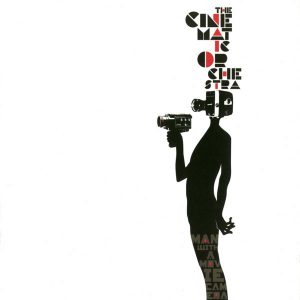The Cinematic Orchestra Man With a Movie Camera Review
General Information:
Artist: The Cinematic Orchestra
Album: Man With a Movie Camera
Genre(s): Nu Jazz
Subgenres(s): N/A
Released: 2003
Length: 61 minutes
Language(s): N/A
Label(s): Ninja Tune
Track List:
01. The Projectionist
02. Melody
03. Dawn
04. The Awakening of a Woman (Burnout)
05. Reel Life (Evolution II)
06. Postlude
07. Evolution (Versao Portuense)
08. Work It! (Man With the Movie Camera)
09. Voyage
10. Odessa
11. Theme de Yoyo
12. The Magician
13. Theme Reprise
14. Yoyo Waltz
15. Drunken Tune
16. The Animated Tripod
17. All Thing
The Cinematic Orchestra Man With a Movie Camera Review
Man With a Movie Camera is the third album and first soundtrack from the British nu jazz group The Cinematic Orchestra. Written to accompany the silent 1929 Soviet Russian documentary by Dziga Vertov, The Cinematic Orchestra use a modern approach to jazz music that focuses on the song as a whole (as opposed to each instrumentalist in the spontaneous bebop or the arranged cool jazz traditions) that are accompanied by an electronic backdrop.
In some parts of Man With a Movie Camera the nu jazz genre is synthesised well and in others it feels out of place or makes little sense. The Projectionist is literally 6 seconds of a high pitched noise, followed by a 20 second snippet of an old jazz recording titled Melody that is only listed as “trad.” in the writing credits. It is treated to a brief echoing fadeout before we get to Dawn, the third track and first actual song.
Dawn features a string trio consisting of a violin, viola and cello that perform a slow, repetitive melody for much of the song as samples of birds tweeting, keyboard ambience and other sound effects litter the soundscape. This leads into The Awakening of a Woman (Burnout), which as the subtitle suggests is a reinterpretation of the song Burn Out from their 2002 album Every Day, and the organ sound of the original has been overshadowed by the string trio and different electronic interjections. The song slowly builds up and will engross the listener in the same way that the six minute instrumental reinterpretation of All Things to All Men does (simply retitled All Things). It is cut down from the original ten minute version and lacks the presence of rapper Roots Manuva so that The Cinematic Orchestra can concentrate on building the atmosphere of the song which still contains the sinister Main Title piece of music by John Barry for the 1968 drama film Petulia.
There are two more interludes found later in the album and both of them throw the atmosphere completely out the window and make it impossible to justify their inclusion. The first of these is Voyage, which follows on as a separate track from the memorable Work It! (Man With the Movie Camera) but it is nothing but a high pitched steamboat horn crashing through your cranium with a swirling ambient noise playing between the two blasts of it.
At this point the listener is then introduced to the second half of Man With a Movie Camera and the songs are much shorter with all but two of them being under three minutes long. The listener is treated to Odessa, a solo piano piece, following the horrific steamboat ordeal as well as a lighter jazz-centric song (Theme de Yoyo) and a minimalist piano piece called The Magician. Unfortunately the mood is once again thrown off by The Animated Tripod. This is literally 72 seconds of bleeps and bloops with a piano chord and static thrown in at the end to bring the piece to a crashing finish and without the visuals of the documentary for context this makes no sense on the album. The aforementioned All Things brings the album to a close and soothes some of the annoyances found earlier on but they will undoubtedly leave the listener with a negative impression.
Within the context of watching the documentary this soundtrack makes far more sense but as a stand-alone release it doesn’t translate nearly as well and at times comes across as a mixed bag with ill-advised interludes and worthy highlights rubbing shoulders with some other inconsistencies that prevent the album from being what it could be.
A link to the documentary with the Cinematic Orchestra soundtrack overlaid can be found at the bottom of this review and begins 3 minutes and 37 seconds in.
Performers:
Luke Flowers: Drums
Phil France: Double Bass
Jon Ellis: Piano/Keyboards
Tom Chant: Saxophones
Patrick Carpenter: Turntables/Electronics
Milo Fell: Percussion
Prabjote Osahn: Violin
Antonia Pagulatos: Viola
Wayne Urquhart: Cello
External Links:
The Cinematic Orchestra Homepage
The Cinematic Orchestra on Wikipedia
Man With a Movie Camera on Wikipedia
